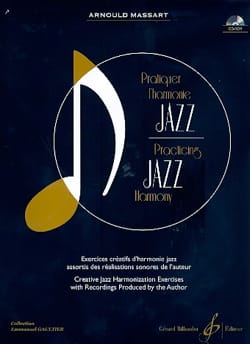Since its origins, jazz remains a harmonic music. Beyond the different currents that have crossed it, beyond the rhythmic energy that animates it, jazz still stands out with sequences of chords giving rise to innumerable melodic paths. The improvised line, which is its own, draws incessantly the musician. Also, the creativity of the latter is directly related to the extent of the assimilation of this harmonic heritage without which the jazzistic discourse would be orphaned. For the jazz student, it is therefore essential to appropriate it. Contrary to popular belief and an all too common habit, mastery of jazz harmony is not acquired by the rational and mental way. Without denying the importance of theory in the teaching of jazz - if only as an indispensable communication system - it is clear that the progressive integration of the harmonic language of jazz is achieved by a direct confrontation with the musical reality. It is not by reflection, but by repeated attempts and corrected errors, that the musical skill of the aspiring jazzman is gradually built up. This book intends to favor this approach. As a practical teaching and learning tool adapted to traders, big or small, and geared towards a progressive integration of the harmonic language of jazz, this manual consists of an assortment of melodies and chord grids ( to discover) offering the possibility of approaching harmony through experimentation. By means of a concrete and repeated pairing of melodic formulas and harmonic progressions, the pupil will gradually establish his own correspondences between the vertical plane and the horizontal plane, thus helping to widen his imaginative palette. The teacher, meanwhile, will find in this collection a valuable teaching tool serving, sometimes springboard, sometimes an extension to its course.
 |